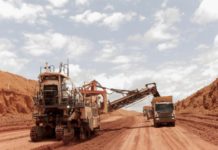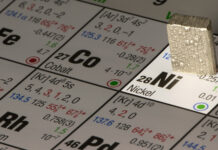
Vedanta Resources has been picking up the shoes in southern Africa that Anglo American has cast off in its eagerness to woo shareholders in a foggy little island in the northern hemisphere.
Vedanta’s Konkola Copper Mines (KCM) in Zambia, Skorpion Zinc mine and refinery in Namibia and the Black Mountain Complex in South Africa are all former Anglo American companies.
Vedanta’s chairman, Anil Agarwal, through his family holding company Volcan Investments, recently bought a 19% stake in Anglo American. Speculation that he was planning some sort of transaction with Anglo American’s South African assets surged again after Volcan’s announcement it would buy out the minority shareholders in London-listed Vedanta Resources at a cost of $1bn.
Vedanta has three divisions: oil and gas; aluminium; and base metals. All the base metals mining businesses are in southern Africa, with the exception of a temporarily suspended copper mine in Tasmania called Mount Lyell. The recently appointed head of the base metals division, Deshnee Naidoo, is a former CFO of Anglo American Thermal Coal who joined Vedanta in 2014.
Working for Vedanta is very different to Anglo, Naidoo says in an interview at the group’s Sandton offices. It’s a decentralised business and its CEOs have to source their own project funding. “That is what I have really enjoyed at Vedanta: the entrepreneurial DNA that comes with everything we do. It is born out of necessity.”
One of Naidoo’s most pressing priorities is getting KCM to deliver on targets. Vedanta bought it in 2004 and has invested $3bn in the assets so far. This includes building a new 1,500 metre shaft and de-bottlenecking and upgrading the downstream operations.
Last year, Vedanta made another $1bn commitment to KCM. This will include both investments in the mine – about $300m to address a backlog in stope development – and in power. The mine should be producing about 400,000 tonnes of copper, but is not yet at even 300,000 tonnes. Naidoo’s first objective is to meet the 300,000 tonnes milestone, sustainably.
“We have to restore KCM to its position in Zambia,” she says. “The resources are exciting. Its copper grade, at an average of 3.5%, is among the best in the world. There is no reason why Zambia should not be the biggest copper producer in Africa.”
One of the challenges operating a mine in Zambia is the cost of power. KCM’s electricity bill is about $12m a month and it is examining options to generate its own. It has coal, and plenty of water. The mine pumps about 350 million litres of water a day – it is the wettest mine in the world – and that could make it viable for a hydro-electric project. A 180-200MW hydro-electric project could cost about $300m.
Another $120m could be spent on cobalt beneficiation, Naidoo says. Cobalt is a by-product of KCM’s copper mining, but it does not process it to premium-priced quality. It is examining treating cobalt in stockpiles, tailings and current arisings to produce a good-quality product. Another $20m will be spent on sprucing up the training centre at KCM.
Vedanta Resources’ other copper project, Mt Lyell in Tasmania, is 130 years old and was the first mine outside India that Vedanta bought. It was distressed at the time and Vedanta wrung another ten years out of it. It was closed prematurely after three fatalities showed it had become too dangerous to continue and copper prices fell below $5,000/t.
Vedanta has recommenced exploration around Mt Lyell and enough copper has been found nearby to justify restarting the mine at current prices and continue exploration. No date for re-opening has been finalised yet, but it is “imminent”, Naidoo says. While the mine is on care and maintenance, it employs about 40 people, but at full operations it would employ 380 to 400.
When Vedanta bought Anglo American’s zinc assets in 2010, Black Mountain included the undeveloped Gamsberg project. Vedanta approved $630m to develop the project, which Anglo American had shelved because the grades were considered too low.
Black Mountain has two shafts: “Deeps” which is due to end in 2020 and produces zinc, copper and lead, and “Swartberg”, which produces mostly copper and lead with silver as a by-product. Swartberg will be deepened at a cost of $200m, since the appreciation in the lead price has made it viable.
Naidoo says although the grades at Gamsberg are only about 6%, and most zinc mines are built on double-digit grades, the scale of the project makes it viable.
In the first phase, four million tonnes of run of mine (ROM) will be mined to produce about 250,000 tonnes of metal in concentrate. Naidoo has cut the cost of the first phase of Gamsberg to $400m by using business partners rather than buying a fleet, and re-engineering aspects of the project, including using new, less expensive processing technology. It was decided to digitise the project from the outset rather than retrofitting, which has helped with efficiency.
Zinc prices were among the first to recover three years ago since its price was driven by supply shortages. Old mines had closed and there were no replacement projects. This has also assisted with the economics of Gamsberg.
First production from phase one was delayed by three weeks after a fatality in May. Management decided to suspend operations for an extra week for retraining and getting feedback from the staff.
As soon as phase one is complete, phase two will begin, which is also budgeted at about $400m. Phase one consists of three pits and in phase two they will be joined into a single mega-pit to mine 10 million tonnes/year of ROM. The environmental permits are already in place and the four million- tonne plant was designed to be modular, so another four million tonnes of capacity can be added in the second phase. At full development, Gamsberg will produce about 440,000t/year of metal in concentrate.
The initial plan was to spend $160m to convert the Skorpion zinc refinery in Namibia to take Gamsberg’s sulphide ore, with a higher manganese and lower manganese stream, once Skorpion had exhausted its oxide deposit.
Instead, Naidoo says, Vedanta has decided to invest $200m in the Pit 112 expansion to add another three years to the life of mine. Currently, with a shortage of zinc concentrate, Vedanta has been able to negotiate an offtake agreement for about a third of Gamsberg’s output with Korea Zinc and Nyrstar.
Skorpion’s underground possibilities are not looking viable. Closing the mine is not an option as there are about 7,000 people living in the vicinity. However, with Rosh Pinah not far away there are regional possibilities, Naidoo says. Rosh Pinah is owned by Canadian-listed Trevali Mining Corporation.
Vedanta’s next step at Gamsberg will be to build a refinery because it will not be logistically feasible to move almost a million tonnes of concentrate when phase two is on stream. The refinery could be built in modules, starting with four million tonnes, which would de-risk it.
Naidoo has come up with a broader plan to underpin the refinery’s viability.
It could produce sulphur dioxide as a by-product, which could be combined with phosphate from Foskor to make fertiliser. Gamsberg’s zinc could be galvanised or used to make batteries in an industrial park to be established in the area. She believes this area would be ideal for the steel mill that South Africa has discussed for years because there is iron ore and manganese in the vicinity, and it is within reach of the port of Saldanha.
“We need about 300MW of power for a refinery, which would bring the total cost to about $800m, but we are in an area suitable for solar energy, which might feed into an integrated power solution,” she says. “The Northern Cape is one of the poorest provinces in South Africa and industrialisation could change that.
“Vedanta is prepared to invest as part of the value chain and we have found the IDC and the PIC are interested in the possibilities. We have undertaken to do a feasibility study on the value chain.”










